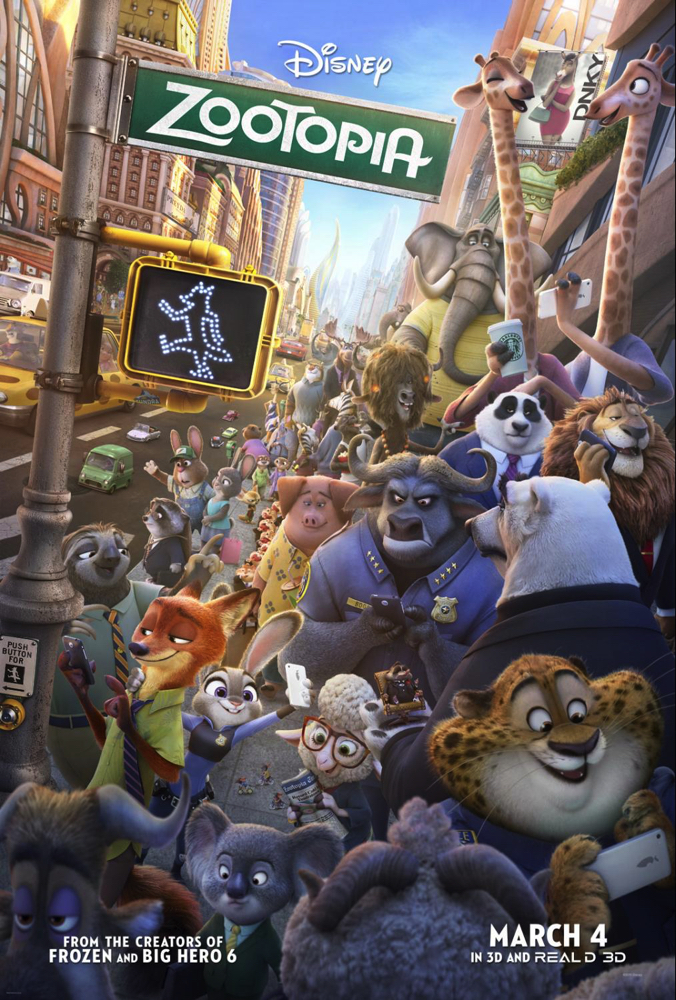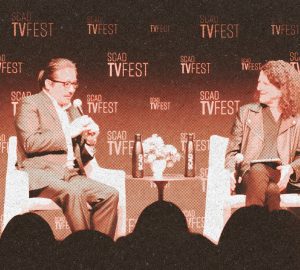Disney’s Lance Summers talks ‘Zootopia’ and animation at SCADshow
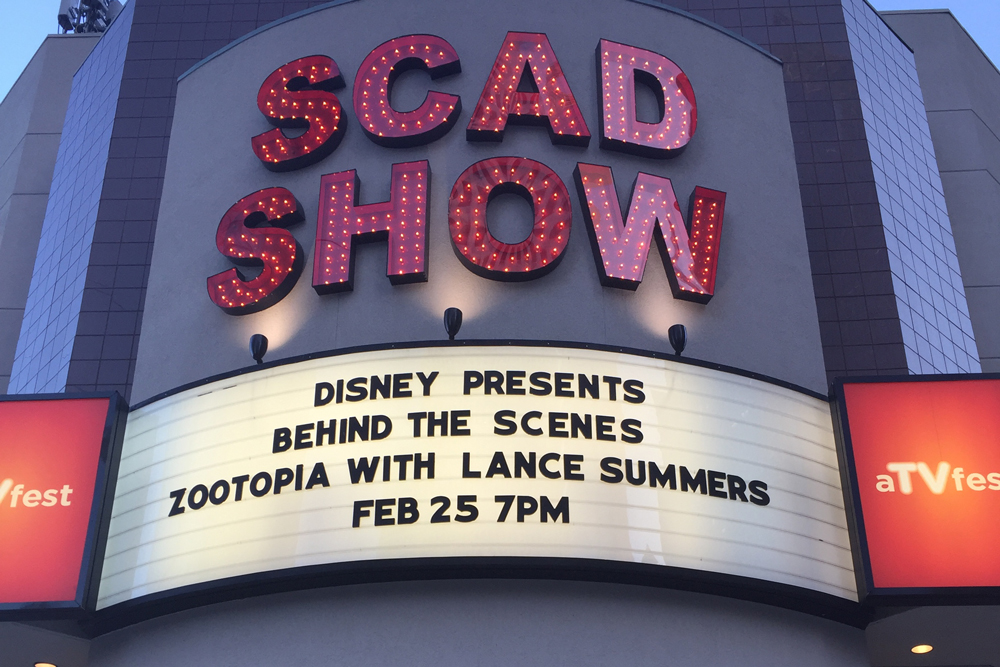
By Darissa Townes, contributor
Disney’s newest film “Zootopia” hits theaters Friday, March 4. It takes place in the city of Zootopia, where animals are the humans of the world, and follows the escapades of Judy Hopps (voiced by Ginnifer Goodwin, “Once Upon a Time”), Zootopia Police Department’s first rabbit officer, and Nick Wilde (voiced by Jason Bateman, “The Gift), a sly fox, as they investigate the disappearance of an otter.
Lance Summers, head of look development for “Zootopia,” visited SCADshow on Thursday, Feb. 25 to discuss the process of making the film. His team’s job was to take the visions of the production designer and art director and make them a reality. They were responsible for lighting environments and adding effects, overall giving the film more life.
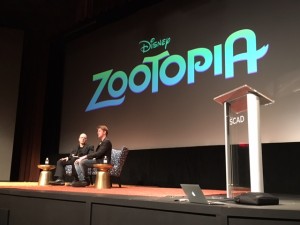
Summers’ first job with Disney didn’t start with “Zootopia,” however. He first joined Disney in 2009 as a trainee and later worked on “Tangled” as his first feature. He eventually lent his talent to making “Wreck-it Ralph,” “Frozen” and “Big Hero 6.”
During the presentation, Summers talked about a technique used in the film called “keep alive.” Many of the environments in “Zootopia” have plants and this technique makes it so the leaves of these plants are constantly moving. This technique accentuated the liveliness of the movie’s backgrounds.
Besides coming up with ways to keep props moving, Summers also discusses how the studio created the different worlds in the city of Zootopia. Since a variety of animals lived in the city, different boroughs had to be made to accommodate them according to their species’ climate preferences, each with a unique way of living. For example, the borough of Tundra Town was a snowy environment made for arctic animals like polar bears and the mode of transportation was via snowmobile and a people-mover, which was a stream with floating chunks of ice for the citizens to ride on.
I had the pleasure of talking with Summers before the presentation to discuss the making of “Zootopia” and his experiences working at Disney.
Animation is such a huge field, so was there ever a big “aha moment” where you realized what you wanted to do?
I think it was right in my senior year of high school and that was when I realized that I wanted to go into animation. I had loved working with computers and doing art and painting and had been taking art classes even outside of high school. It was just a natural thing to go into computer animation because you have to be a little technical, but mainly artistic as well. So it just kind of naturally came to me that that was where I should be.
For all the stuff that you’ve been working on, does each project portray their own technical challenges and what would you say is the biggest challenge out of the films you’ve worked on?
Each film has its own challenges because the story dictates the challenges, as well. For instance, the story of “Wreck-it Ralph” having all these multiple game worlds and trying to figure out how to make them each look like their own separate game, but have them look like they’re all part of the same world. And then for “Zootopia,” one of the main challenges is you have all these multiple environments that are different that you have to figure out how to technically achieve the look of them, but also make them look like they’re part of that world. So that’s the difficult part. I think “Zootopia” was probably the most difficult film so far because of its scope and scale — it’s just a huge story.
For the advertisements for “Zootopia,” they love to show off that city setting. A lot of animations nowadays are taking place in big cities, so how do you go about designing the city in Zootopia in a way that would set it apart from another big animated city?
It’s an interesting thing — when we were trying to decide early on how it should look, we were bouncing off of ideas like, should it be created from organic rock formations or should it be a more modernized city? And we landed on something like a modernized city but has a lot of animalistic features to it. Some of the buildings might look like an animal horn. Even on our train station, our art director Mattias Lechner, he actually designed the train station off of a train station that he knew in Berlin because he’s from Germany and he just added some animalistic features to it. So I think it’s kind of different because you have all these modernized buildings and you do have some older ones too, but they all have an animal feature to them that kind of changes slightly from what we might create and architecture that we might make. Think of it along the lines of architecture that the animals would create.
This year in animation is slated to bring in a ton of stories about animals. Why do you think the industry is so fascinated with these kinds of narratives?
There’s been quite a few animal films that have come out in the past. And there always seems to be an interest with talking animals. I don’t quite understand why — actually, I just know that it’s really popular. But in my opinion, I think “Zootopia” is way different than all the other animal animated films out there because it’s basically a story that’s involving two characters that’s taking place in this world. It’s all about the story, as opposed to just showing off the world and showing off that animals can talk. After awhile, you forget that these are talking animals — it’s kind of cool in that fact.
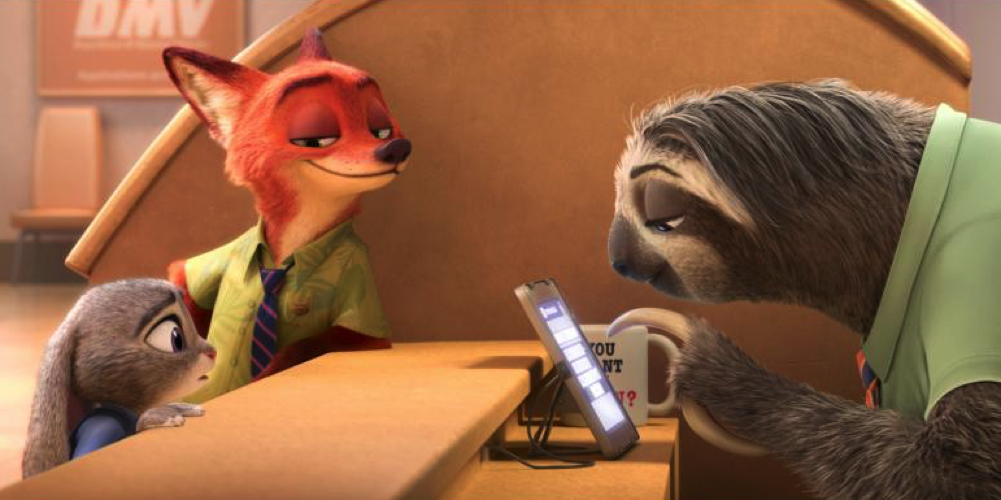
Hot-button question: As someone who studied 3D animation you’ve probably met those 2D animation purists who feel that 3D lacks (insert something 2D animation has that 3D allegedly doesn’t). What would you say to those purists in regards to your craft?
This is something that I sometimes tell students who are doing 2D animation. It’s a medium. If you know the principles of animation and you’re doing 2D, all you have to learn is the tech. It’s a different toolset. If I go to a studio that’s making a 2D film, all I have to do is change the way I work. It’s still all those principles of art and design, and that eye that you build up throughout the years is still there. You’re making something on screen and it’s got to look good — it’s all art in the end.
It seems like the film industry moves in a pipeline. Once your job is over, what do you usually do to stay busy?
The thing is that, being in look development, we’re such a centralized department. We start early and go until the film is completed. Basically, we’re busy throughout the entire film. If we’re not actively painting sets, we’re helping other departments because when these sets go to shot departments like lighting, we actually have to support them and help them with whatever needs they have. If they’re trying to achieve a look with the light and it’s not reflecting off a surface like they want it to be, then we have to go in and adjust that and tweak things. The story is always updating, so we’re constantly busy. And our films are slated out, too, so as soon as the look artists finish on this film and me too, we all move on to the next film. So I’m already working on “Gigantic,” which is the film coming after “Moana.”
How did you feel about going from Full Sail University all the way to Disney? How did you react to all that?
You know, it was luck and timing. It was a huge rush. It was six months after I graduated, which was a little bit of time, but I think that’s about average time to find steady work after college. I didn’t expect it and it took me a little bit to understand what was actually happening because it happened so quickly.
What was a film that inspired you or a film that you always look towards for inspiration?
“Beauty and the Beast” is my childhood favorite, so it was so cool to start at Disney. I had a mentor when I started and she actually worked on that film, so that was really strange for me. It was really cool to be taught by someone who worked on something that I had watched years ago, so that brought a lot of inspiration to me.
It seems like the industry is really concentrated in the Burbank area. What are your thoughts on this?
I think there’s a lot of big studios there. My advice to students is apply everywhere. Apply to big studios, to the internships, to the talent development programs — whatever programs there are that are easy and okay for students to get in the door. Don’t limit yourself to one area. Apply around the world, even. So even if you’re in California, keep applying to places in New York or San Francisco. You never know, you might have to pack your bags and go to a studio somewhere else.
What advice would you give to the 3D and visual effects students?
The advice I always love to give is: An A+ in any college isn’t enough. You have to work on stuff on your own time — you have to keep developing your eye. Let’s say you have an animation class but you want to do compositing or look development or modeling. Try hard at the animation class because that comes in value, but on your own time, be sure to keep up with the modeling, or the look, or whatever path you want to go down. And then that will also help out your portfolio and your demo reel and everything you need to apply for positions later after college.
“Zootopia” comes to theaters on Friday, March 4.
